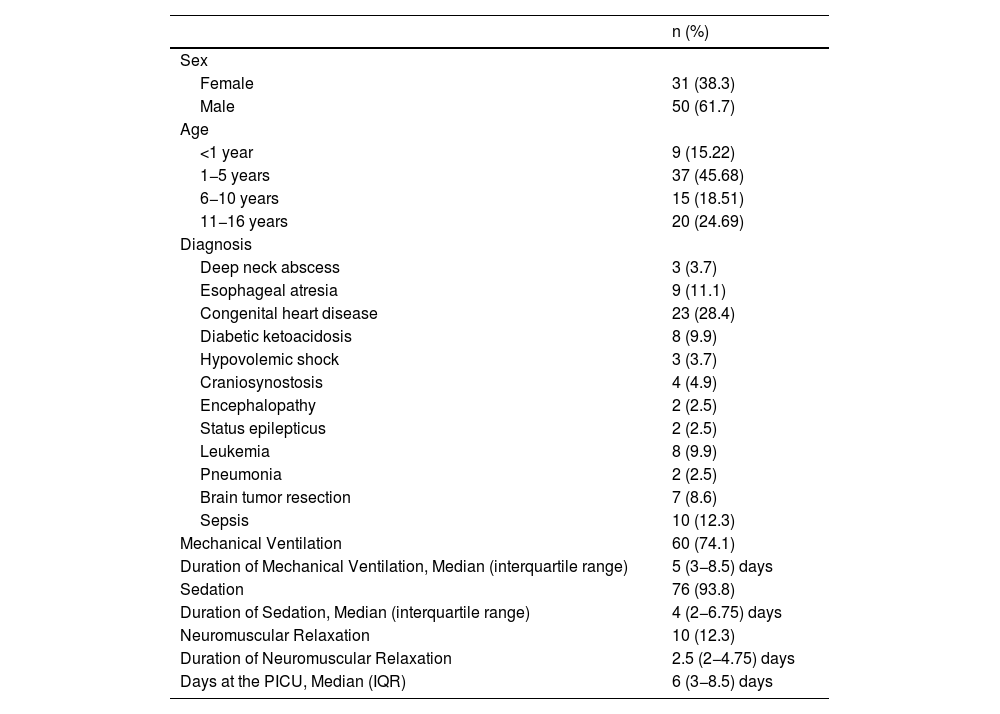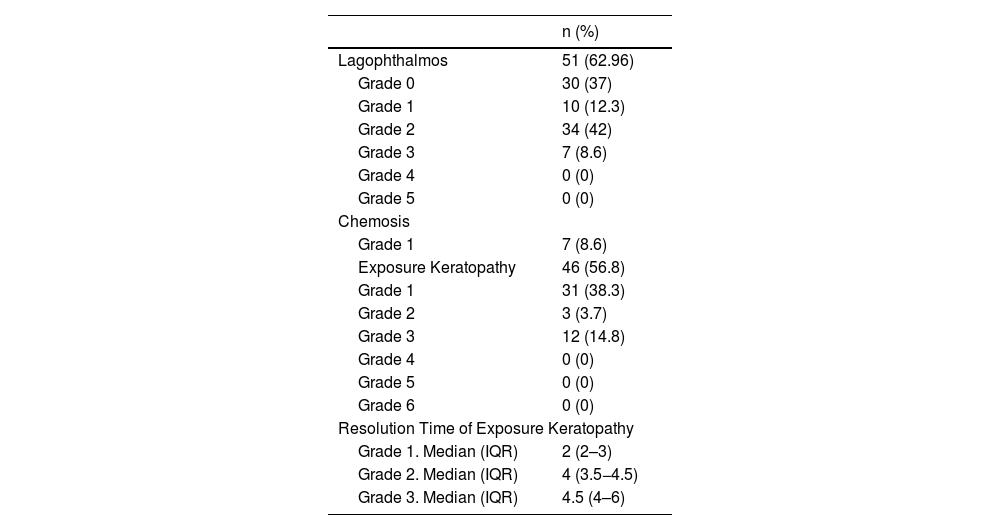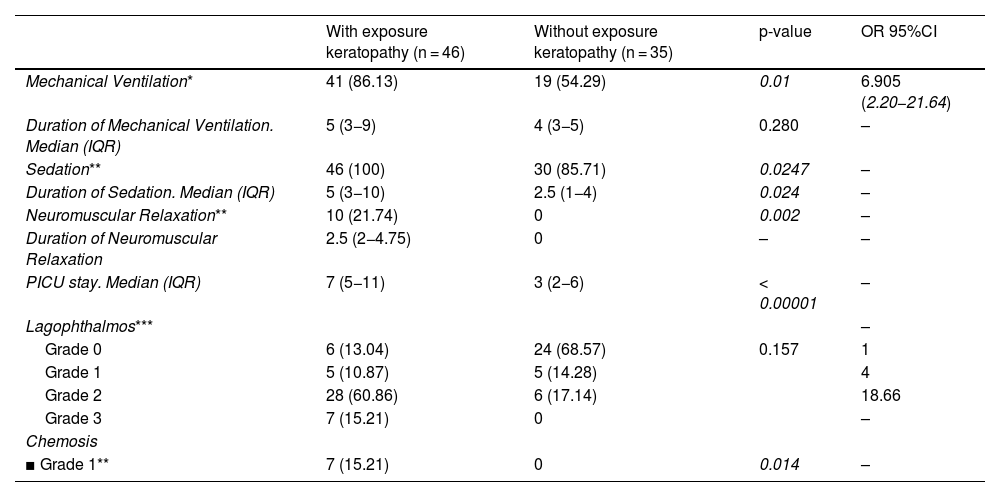Exposure keratopathy (EPK) is characterized by punctate erosions of the corneal epithelium, mainly located in the lower third of the cornea. In the Pediatric Intensive Care Unit (PICU), an incidence of 19–25 % has been reported. The objective of this study was to describe the frequency, risk factors, and time to resolution of exposure keratitis in PICU patients.
Materials and methodsDescriptive, observational, longitudinal, prospective study. The association of keratitis due to exposure to risk factors was evaluated using the Chi square test and determining the OR and 95% confidence interval.
Results81 patients admitted to the PICU between March and September 2023 were included, 46 (56.79%) developed PEK, 67.39% (31/46) grade 1 and 26.08% (12/46) grade 3. The median time Resolution was 3 days, interquartile range (2–5). A significant difference was observed between patients with and without PEK in the requirement for mechanical ventilation 86.13% vs., 54.29% p = 0.01, OR = 6.905 (2.20−21.64), sedation 100% vs., 85.71%, p = 0.02, in the duration of sedation 5 days vs. 2.5 days (p = 0.024), neuromuscular relaxation 21.74% vs., 0%, p = 0.002, lagophthalmos 86.94% vs., 31.43% p < 0.00001, OR = 13.33 (4.42–40.17), chemosis 15.21% vs., 0%, p = 0.014 and days of stay in the PICU median 7 (5–11) vs. 3 (2–6), p < 0.00001.
ConclusionsThe frequency of QPE observed was 56.79%, higher than that previously reported in the literature in the pediatric population. Mechanical ventilation, sedation, duration of sedation, Lagoftalmos chemosis and days of stay in the PICU were identified as risk factors.
La queratopatía por exposición (QPE) se caracteriza por erosiones punteadas del epitelio corneal, principalmente localizadas en el tercio inferior de la córnea. En la Unidad de Cuidados Intensivos Pediátrica (UCIP) se ha reportado una incidencia del 19–25 %.
El objetivo de este estudio fue describir la frecuencia, los factores de riesgo y el tiempo de resolución de la queratitis por exposición en pacientes de la UCIP.
Materiales y métodosEstudio descriptivo, observacional, longitudinal, prospectivo. Se evaluó la asociación de queratitis por exposición a factores de riesgo mediante la prueba de Chi cuadrado y la determinación de OR e intervalo de confianza al 95%.
ResultadosSe incluyeron 81 pacientes ingresados en la UCIP entre marzo a septiembre 2023, 46 (56.79%) desarrollaron QPE, el 67.39% (31/46) grado 1 y el 26.08% (12/46) grado 3. La mediana del tiempo de resolución fue de 3 días, rango intercuartil (2–5). Se observó diferencia significativa entre pacientes con y sin QPE en el requerimiento de ventilación mecánica 86.13% vs., 54.29% p = 0.01, OR = 6.905(2.20−21.64), sedación 100% vs., 85.71%, p = 0.02, en la duración de la sedación 5 días vs. 2.5 días (p = 0.024), relajación neuromuscular 21.74% vs., 0%, p = 0.002, Lagoftalmos 86.94% vs., 31.43% p < 0.00001, OR = 13.33 (4.42–40.17), quemosis 15.21% vs., 0%, p = 0.014 y días de estancia en UCIP mediana 7 (5–11) vs. 3 (2–6), p < 0,00001.
ConclusionesLa frecuencia de QPE observada 56.79%, más alta que la reportada previamente en la literatura en población pediátrica. Se identificaron como factores de riesgo ventilación mecánica, sedación, duración de la sedación, Lagoftalmos quemosis y días de estancia en UCIP.
Artículo
Comprando el artículo el PDF del mismo podrá ser descargado
Precio 19,34 €
Comprar ahora









